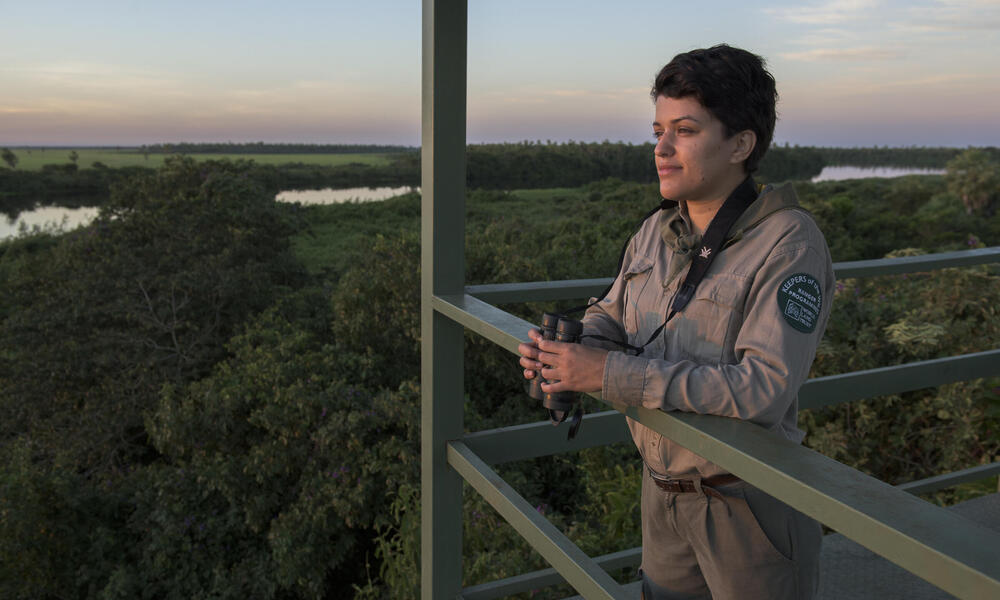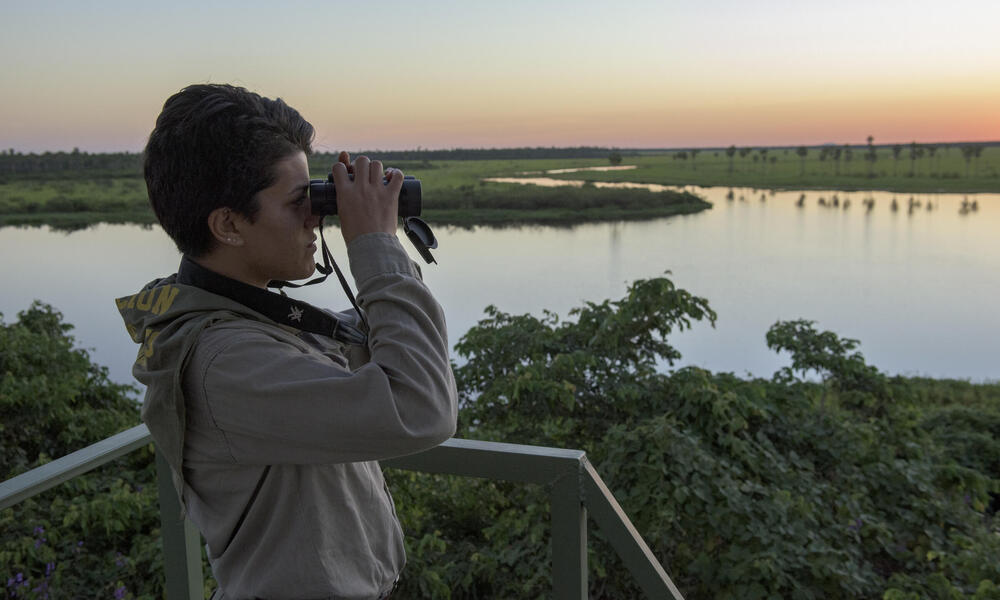After completing a course designed for rangers, where she learned about protected areas, biodiversity, map interpretation, environmental law and relationships with indigenous communities, Alvarez was offered the lead role at Los Tres Gigantes Station, overseeing the other rangers and the work they all share. As one of the only two women working in the conservation area, she was excited to take on the challenge.
“It was an easy offer to accept,” she says. “It was something I always wanted, to protect a place like this and help it thrive.”
In an average week Alvarez monitors plants and animals — jaguars, anacondas and caiman among them — with trap cameras, cleans trails and welcomes the conservation area’s visitors, many of whom stay in the solar-powered building facing the water. Visitors can take their time exploring the riverfront and trails of Tres Gigantes, heads turned up to search the sky for the Pantanal’s innumerable species of birds, like toucans and parakeets, and down to look for species that don’t soar above the river, like marsh deer and giant otters.
Alvarez spends Friday mornings at the public elementary school in Bahía Negra, working alongside local environmental NGO Eco Pantanal—a local partner of Guyra Paraguay and WWF—to teach kids about the importance of taking care of the place where they live. She’s also planning a weekend camp to bring high school kids to Los Tres Gigantes Station, where they can learn more about conservation and sustainable development.
Environmental education and planning are important pieces of conservation work in the Bahia Negra district, done through partnerships with Guyra Paraguay, WWF, local organizations, and rangers like Alvarez.
“Education is fundamental for these kind of places to keep existing,” Alvarez says. “And the role of local communities in conservation is fundamental for them to feel a part of this place.”

